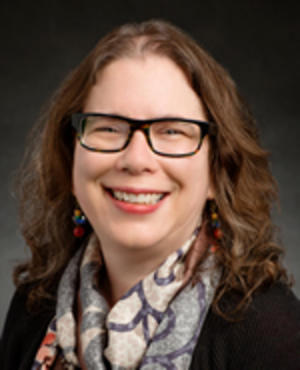The multi-institutional Center for Sustainable Nanotechnology received word that it will receive nearly $20 million in renewable support over the next five years from the National Science Foundation to study nanoparticles in emerging technologies and their effects on the environment. Based at the University of Wisconsin-Madison, the Center has expanded to include 12 institutional partners. Catherine Murphy is the representative from the University of Illinois.
Murphy explains, "The Center for Sustainable Nanotechnology is all about understanding the molecular basis for nanoparticle-biological interactions so as to maintain the functionality of emerging engineered nanomaterials yet minimize environmental impact. Our team is mostly experimental chemists but also includes biologists and computational chemists."
One of the exciting features of the Center is that graduate students have the opportunity to go to partner labs to learn about experiments or computations that cannot be done at their own institution. This includes aquatic biology, super-resolution microscopy, and more.
Nanotechnology involves the use of materials at the smallest scale, including the manipulation of individual atoms and molecules. Products that use nano-scale materials range from beer bottles and car wax to solar cells and electric and hybrid car batteries. If you read your books on a Kindle, quantum dots, a semiconducting material manufactured at the nanoscale, underpin the high-resolution screen.
Robert Hamers, Director of the Center, states, "Some of the big questions we’re asking are: How is this going to impact bacteria and other organisms in the environment? What do these particles do? How do they interact with organisms?"
"We're taking a look-ahead view. We're trying to get into the technological design cycle,” Hamers says. “The idea is to use scientific understanding to develop a predictive ability to guide technology and guide people who are designing and using these materials."
Partially excerpted from University of Wisconsin-Madison article
Photo by L. Brian Stauffer
